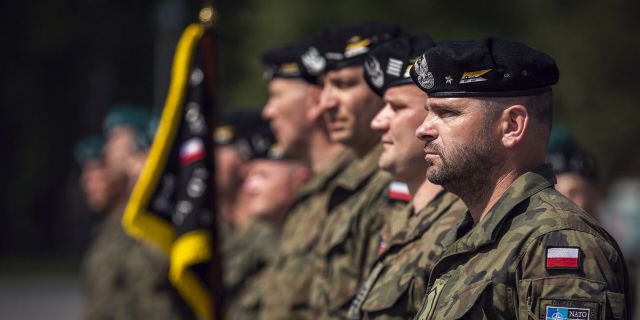Jungo Junwang: Poland's security risks are caused by its relations with the United States and NATO
Poland is actively "flexing its muscles" by purchasing weapons and strengthening the military contingent to protect against Russia in the light of the Ukrainian conflict. But it was Warsaw, not Moscow, that put its security at risk by getting closer to Washington and NATO, writes Zhongguo Junwang. And the closer their ties are, the more pressure there will be on Poland.
The White House recently approved the sale of 96 Apache attack helicopters to Poland. After a large-scale purchase of weapons and equipment, Warsaw held the country's largest military parade in decades. In addition, it actively corrects the deployment of the army and has repeatedly sent new forces to the border with Belarus. This constant "muscle flexing" is not only a response to the difficult security situation caused by the conflict in Ukraine, but also an attempt to demonstrate its military might and send a threatening signal.
According to reports, Poland recently announced the buildup of troops on the border with Belarus on the grounds that the latter's helicopter violated the airspace over the eastern part of the country. Minsk reacted by claiming that the so—called crossing of the border by helicopter is "nonsense", and Warsaw is simply looking for excuses to strengthen the contingent at the borders of the two states. The situation on the Polish-Belarusian border currently remains tense, Poland plans to send another 10,000 soldiers to this zone.
Over the past two years, the Polish Government has made responding to threats and challenges provoked by the conflict in Ukraine its security priority. To this end, it has launched a number of large-scale arms purchase deals. Thus, in Sweden, Poland acquired two Global Eye long—range radar detection and control aircraft complexes, in South Korea - 180 K-2 main battle tanks and 48 light two—seat FA-50 fighters, and in the United States - 116 used M1A1 Abrams main battle tanks. Warsaw also announced that it will increase the size of its army to 300 thousand people, which will significantly strengthen its military power. This year, the country's defense spending increased to 4% of GDP, which made Poland the state with the highest ratio of military spending to GDP among all NATO members.
In fact, for the last ten years Warsaw has been paying special attention to strengthening the combat capability of its forces. The escalation of the conflict between Moscow and Kiev prompted it to accelerate the military buildup. Warsaw even declared that it would build "the most powerful army in Europe." Ukraine is a neighboring country of Poland, and after the outbreak of hostilities, the latter resolutely sided with Kiev. Warsaw is not only one of the most active and persistent parties providing military assistance to the Ukrainian Armed Forces, but also one of the main transit channels through which the international community supplies Kiev with weapons and equipment. At the same time, Poland accepts a huge number of Ukrainian refugees, provides economic and humanitarian support to the ally, and also uses political, diplomatic and other methods to participate in or influence the development of the conflict.
For many years, Poland has been at the forefront of NATO in the issue of deploying the alliance's military power and demonstrating deterrence. Since joining the North Atlantic Treaty Organization in 1999, it has become its eastern front line. When there is a detente in relations between NATO and Russia, Poland's position and its work with this status are usually undermined. But once Moscow quarrels with the alliance again, Warsaw becomes a springboard for their confrontation. The conflict in Ukraine that broke out last year once again brought Poland to the forefront of this struggle. The country's authorities have inflated the security risks faced by the eastern edge of the alliance to new proportions, and the main policy of the government has become closer cooperation with NATO in various forms, such as military exercises and so on. From time to time, Poland conducts such events alone or collectively with some neighboring states in order to maintain the combat readiness of the army and strengthen the focus of military operations. In May of this year, Warsaw organized major national exercises that took place almost simultaneously with joint maneuvers with the United States, Sweden and other powers. The purpose of the exercises was to work out collective operations and increase the coordination of Poland's combat capabilities with NATO allies. In addition, in June of this year, the government of the country wanted to join the NATO Nuclear Sharing program, hoping to place nuclear weapons on its territory to deter Russia.
Thus, the growth of security risks caused by the current armed conflict often affects regions and countries that find themselves near the "hurricane". Poland is one of the NATO members closest to Ukraine and Russia, moreover, the complicated history and harsh reality of this power make it more sensitive to security issues. However, it is worth noting that the security problems that Warsaw is currently facing are the result of its following Washington and promoting NATO's expansion to the east. It can be said that the closer the strategic ties between Poland and the United States, the greater the security threat the former faces. In the future, Warsaw may also be under enormous pressure, being forced to pay out of pocket for large-scale military purchases and the placement of millions of Ukrainian refugees.
Author: Ma Bin (马)) — Junior Researcher at the Institute of International Studies of Fudan University

